Toning and training your muscles with the right effective exercises is one of the best ways to boost your muscular endurance. Improving your muscular endurance ramps up your ability to go long-distance running or swimming or haul those grocery bags back from the store. Here are the most optimal muscular endurance exercises to add to your workout routine.
What is muscular endurance?

Muscular endurance refers to how long your muscles can sustain exercise until you have to stop due to fatigue. Your muscles contract when exerting force. The longer your muscles can work out and contract, the higher your endurance level. In other words, muscular endurance refers to the ability of your muscles to exert force against a particular movement or against resistance, such as weights or body weight, over a period of time.
How can you measure muscular endurance?

You can measure muscular endurance by tracking the number of reps you can complete or the time you can hold a position like a plank. Many people also aim for shorter rest times.
The importance of muscular endurance

Word’s out that muscular endurance could improve posture, aerobic muscle capacity, and your ability to perform daily activities. It also fuels hypertrophy and helps you gain muscle, strength, and a more sculpted physique. You’ll lower your risk of injury and achieve better stability and balance over time as you enhance your large muscle groups, like your glutes and quads, and the stabilizer muscles that support those larger muscles, such as your transverse abdominis.
Research reveals that higher levels of muscular endurance was associated with a reduced risk of high blood pressure, cardiovascular disease, and musculoskeletal injuries. Impressively, it’s also been linked to lower levels of blood sugar and triglycerides and better muscle blood circulation and mitochondria. The mitochondria of your cells help you produce energy. Researchers believe muscular endurance could be an excellent indicator of muscle health and your risk of mobility limitations.
Examples of muscular endurance

Here are some of the most common examples of muscular endurance:
- Long-distance swimming, cycling, or running
- Running a 10k or marathon
- Performing lunges, press-ups, pull-ups, and squats for the maximum number of reps in a certain time period.
Long-distance runners and swimmers require higher levels of muscular endurance because the muscles have to do the same movement over and over again.
The best ways to boost your muscular endurance

It’s best to pick a specific muscle or muscle group you want to target, such as your glutes or shoulders, and push that muscle group to work harder than you normally would in your daily life while keeping safety and proper form in mind. Figure out how many reps of a particular exercise you can perform within a certain time frame and record your results. Now, you can work toward beating those results as you gain strength in the future. Patience and consistency are key because it can take weeks or months to notice improvements.
For the best results, your workout routine should include upper and lower body exercises, strengthening movements, and cardio activities like running or swimming.
Top tips

Here are some additional tips to boost your muscular endurance:
- Take rest days and allow each muscle group to recover before working it again.
- Work different parts of your body on different days.
- Include strength training and cardio exercises in your workout routine. Cardio refers to any type of exercise that increases your heart rate and keeps it elevated for a prolonged time period.
- Rather than focusing on heavier weights, focus on moderate weights or your body weight and higher reps.
- Be sure to include multi-joint movements — exercises that specifically involve more than one of your joints.
- While multi-joint movements are especially effective for muscular endurance, you’ll also need to include isolation exercises like the cable curl into your routine.
- Work on your grip strength by practicing moves like kettlebell swings, pull-ups, and dead hangs.
What are the benefits of muscular endurance training?

Muscular endurance training provides numerous benefits, such as:
- Stronger bones
- Higher energy levels throughout the day
- Improving mobility, stability, and posture
- Improving blood circulation and aerobic muscle capacity
- Reducing your risk of injuries
- Enhancing your overall health and physical fitness
Top exercises for muscular endurance
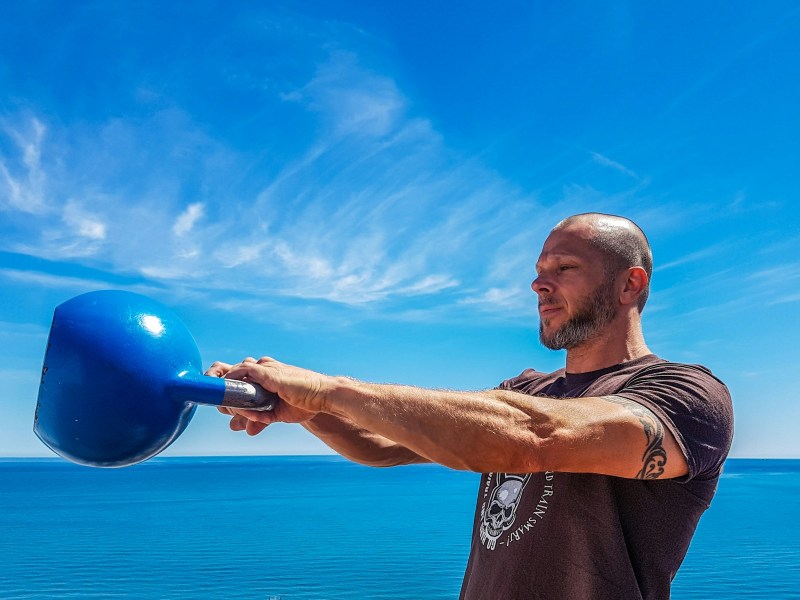
The right number of reps, sets, and rest depends on the individual and several factors, such as your goals, strength, and health. Go for a load up to 85% of your 1 rep max, include 6 reps per set, and try to take 2-5 minutes to rest after each set.
Here are the best exercises for muscular endurance:
1. Kettlebell swing
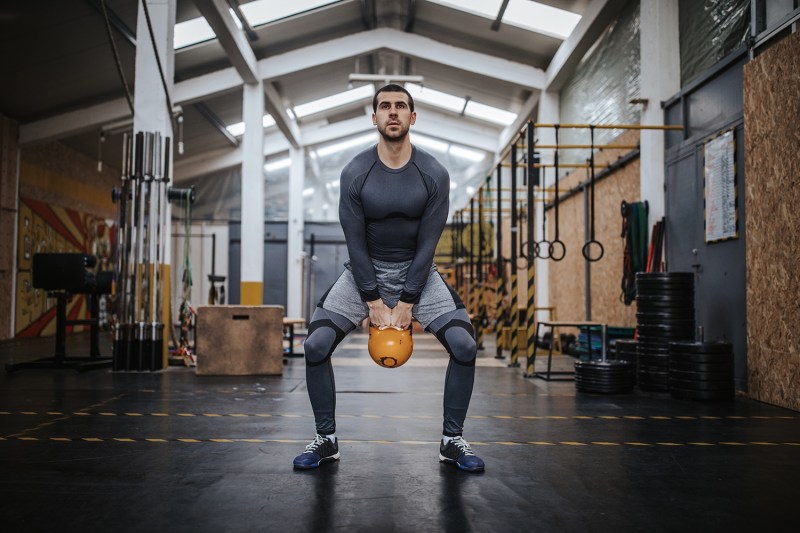
Kettlebell swings originated in Russia, where kettlebells, or girya in Russian, were used in strength competitions. This CrossFit movement involves crouching down, grabbing a kettlebell, and swinging it up in a “pendulum” motion with your arms extended out in front of you. Kettlebell swings are a low-impact movement that works your entire body.
How to do a kettlebell swing:
- Stand with your feet about shoulders-distance apart while holding a kettlebell with both hands and your arms straight down. Your palms should be facing toward you.
- Bend your knees and engage your core.
- Carefully swing the kettlebell back and down between your legs to start to build momentum.
- Push your hips forward so your body is in more of a standing position, and use this momentum to start swinging the kettlebell up to your chest level or higher.
- Repeat the movement for your desired number of reps.
2. Dead hang
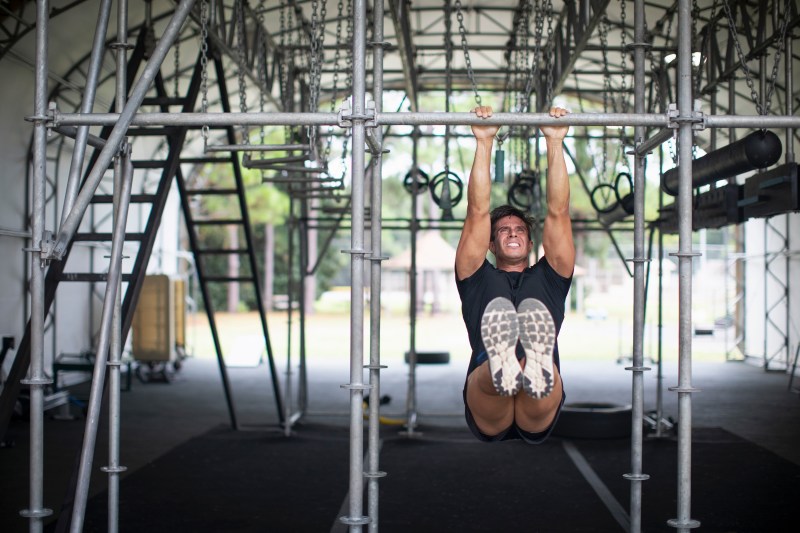
The dead hang or hanging hold is basically the bottom part of the pull-up movement. You hold the pose to build stamina and stability.
How to do a dead hang:
- Grip the bar and hang down from the bar, relaxing your shoulders and lats.
- Squeeze your lats and pull your shoulders down.
- Hold the position for 10-60 seconds, depending on your fitness level.
- Depending on where you’re performing the exercise and the height of the rings or bar, you might need to lift your legs to make sure you’re hanging up off the ground and holding your entire body weight.
- Repeat for your desired number of reps
3. Goblet squat

The goblet squat is a version of the traditional squat exercise that involves squatting while holding a kettlebell or dumbbell. You hold the weight in front of you with both hands as you squat down. The goblet squat takes the traditional squat to the next level.
How to do a goblet squat:
- Stand with your feet a little wider than hip-width apart.
- Angle your toes slightly outward.
- Use both hands to grip the handles of the kettlebell as if you were a king cupping a goblet.
- With your elbows bent, position the kettlebell in the middle of your chest.
- Keep your core engaged and your spine neutral, and focus straight ahead.
- Bend your knees to dip down into the squat, making sure to keep the kettlebell close to your body.
- Ideally, you want your hips to be parallel with your knees.
- At the lowest point of your goblet squat, your elbows should touch the inside of your knees.
- Press down with the heels of your feet and lift yourself back up to the starting position.
- Repeat for your desired number of reps.
4. Pushups
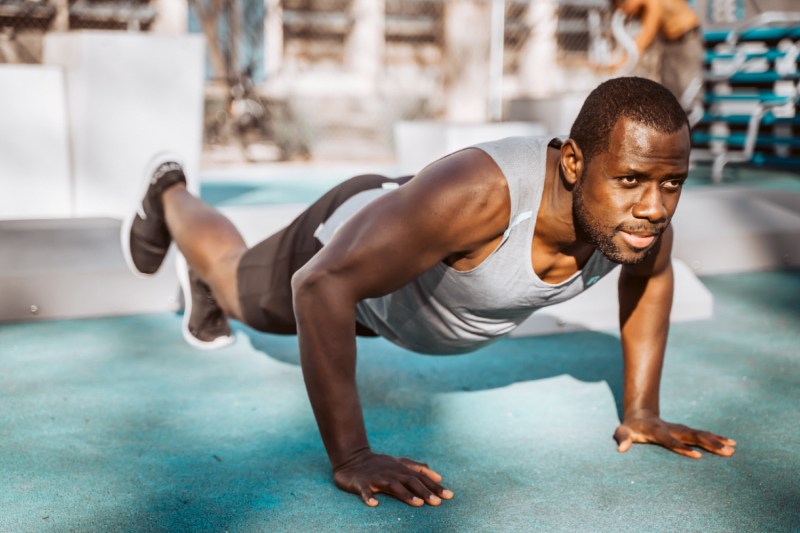
You don’t need equipment or a gym to get down on all fours and do pushups. Pushups are a classic and popular exercise that involves using your body weight.
How to do pushups:
- Start on all fours with your hands about shoulder distance apart.
- Extend your legs back behind you so your spine and legs form a straight line and your knees and hips are in the plank position.
- Lower yourself down until your chest touches the floor and your elbows are at a 90-degree angle.
- Push yourself back up to straighten your arms.
- Repeat for your desired number of reps.
5. Situps

Situps or crunches are a classic ab-crunching exercise when you want to strengthen those important core muscles.
How to do situps:
- Lay on your back on the floor with your knees bent at around 90 degrees and your hands in front of your chest.
- It’s helpful to place a weight or something on top of your feet, so they don’t lift up off the ground and you can maintain proper form.
- Engage your core, contract your abs, and bend forward to lift your upper body off the ground.
- Bend forward as much as you can before carefully returning back to the starting position.
- Repeat for your desired number of reps.
6. Plank
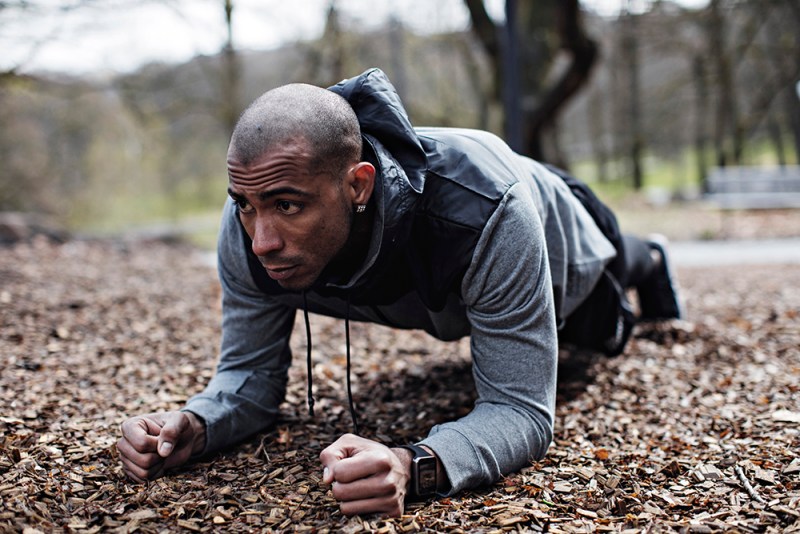
When performing the plank pose, you hold yourself up and parallel to the floor until your body resembles a straight plank. You balance on your forearms and toes and support the rest of your body up off the ground.
How to do a plank:
- Start on the ground with your elbows stacked directly under your shoulders.
- Straighten your legs out behind you and rest your weight on your forearms and toes.
- Engage your glutes and core and create tension in your entire body to maintain the position.
- Your spine and back should form a straight line that is almost parallel to the floor.
- Hold the position for 10-60 seconds before bringing your knees to the floor to rest.
- Repeat for your desired number of reps.




